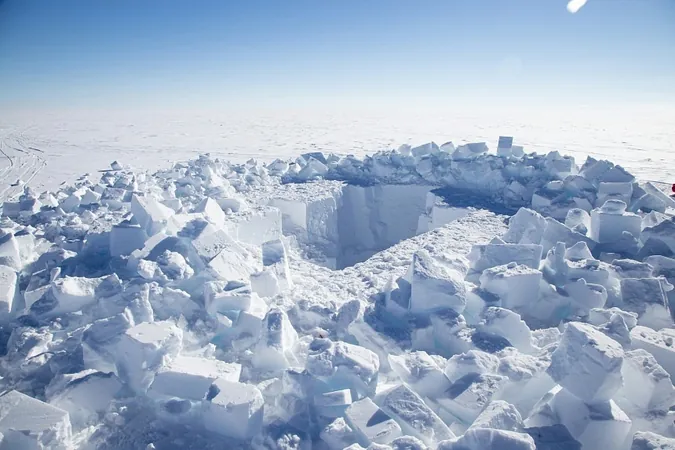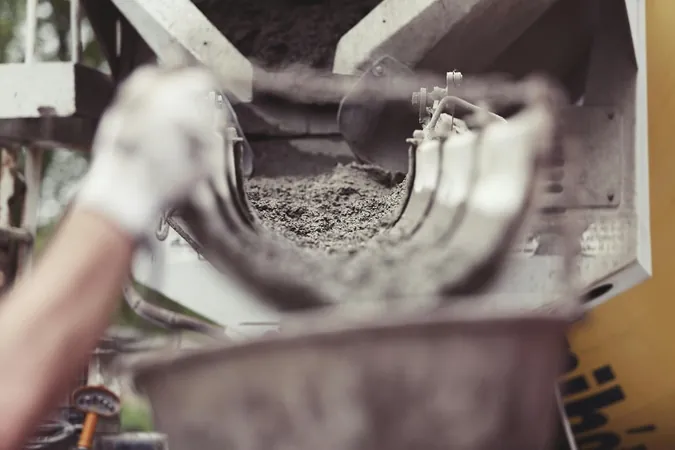
‘Doomsday’ Glacier Faces Accelerated Melting, Threatening Sea Levels as Climate Crisis Worsens
2024-09-20
‘Doomsday’ Glacier Faces Accelerated Melting, Threatening Sea Levels as Climate Crisis Worsens
In a groundbreaking new study, scientists from the UK and US have raised the alarm about the Thwaites Glacier in Antarctica, a massive formation often dubbed the “Doomsday” glacier due to its potential catastrophic impact on global sea levels. Researchers report that tidal forces acting on the glacier’s underside will accelerate its melting at an alarming rate this century.
The Role of Thwaites Glacier
The Thwaites Glacier, approximately the size of Florida and over 2 kilometers thick in some sections, plays a crucial role by acting as a stabilizing anchor for the West Antarctic Ice Sheet. However, new findings suggest that the glacier's rapid retreat—now in its 80th year and having sped up dramatically over the last three decades—could spell disaster. If Thwaites collapses, sea levels could rise by as much as 65 centimeters. In a worst-case scenario, the meltdown could contribute to a staggering rise of up to 3.3 meters as the entire ice sheet disintegrates.
Warnings from ITGC Scientists
Researchers from the International Thwaites Glacier Collaboration (ITGC), which includes the British Antarctic Survey and the US National Science Foundation, emphasize that while some models show potential relief from greenhouse gas reductions as outlined in the 2015 Paris Agreement, the future for Thwaites appears “grim.” Dr. Rob Larter, a marine geophysicist involved in the study, noted, “Our findings indicate it is set to retreat further and faster.”
Innovative Research Techniques
The study employed cutting-edge technology, including a torpedo-shaped robotic device, to investigate the glacier. Interestingly, scientists found that a thin layer of cold water initially insulated the underside of Thwaites. However, in areas where the glacier has lifted off the seabed, warmer seawater is rapidly being pumped under the ice, effectively disrupting this insulation and accelerating the melting process.
Interconnected Glacial Systems
This phenomenon mirrors similar dynamics observed in Greenland's glaciers, underscoring the interconnectedness of glacial systems in a warming world. Researchers also flagged a troubling scenario where towering ice cliffs—over 100 meters high—could form at Thwaites’ front and break off as icebergs, potentially contributing even more to sea level rise within this century.
Assessing the Irreversibility of Thwaites' Loss
While the current data paints a concerning picture, scientists indicate that it is too soon to definitively assess the likelihood of these scenarios occurring. A pressing question remains: Is the loss of the Thwaites Glacier already irreversible?
Balancing Snowfall and Ice Melt
Compounding this issue is a precarious balance between snowfall and ice melt in Antarctica, as highlighted by climate scientist Ms. Michelle Maclennan from the University of Colorado at Boulder. She explained that heavy snowfalls can replenish some of the ice lost, yet currently, ice loss outpaces snowfall. As global warming continues to increase moisture levels in the atmosphere, it may initially result in heightened snowfall—however, this could soon transition to rain and surface melting, exacerbating the glacier’s decline.
Call to Action
As nations grapple with the urgent need to combat climate change, the fate of the Thwaites Glacier could hinge on our collective response and commitment to sustainable practices. The clock is ticking—how much time do we have left before it’s too late? Stay informed and engaged, because the consequences of inaction may be more significant than we can imagine.



 Brasil (PT)
Brasil (PT)
 Canada (EN)
Canada (EN)
 Chile (ES)
Chile (ES)
 España (ES)
España (ES)
 France (FR)
France (FR)
 Hong Kong (EN)
Hong Kong (EN)
 Italia (IT)
Italia (IT)
 日本 (JA)
日本 (JA)
 Magyarország (HU)
Magyarország (HU)
 Norge (NO)
Norge (NO)
 Polska (PL)
Polska (PL)
 Schweiz (DE)
Schweiz (DE)
 Singapore (EN)
Singapore (EN)
 Sverige (SV)
Sverige (SV)
 Suomi (FI)
Suomi (FI)
 Türkiye (TR)
Türkiye (TR)